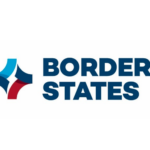In a persistently volatile economic landscape, price optimization is one of the most important defensive barriers organizations can put in place to avoid lost business brought about by external factors like rising inflation and changing customer expectations. While counter-intuitive, price improvement has a greater positive impact on the bottom line than cost-cutting.
Price optimization for distributors’ marketing function
Price optimization is the practice of deciding the most effective pricing for a product or service. It is how organizations find the optimal price their customer is willing to pay for a product: not so high that they risk losing that customer’s business, not so low that the organization sacrifices margin. It’s the right price, for the right customer, at the right time – which, not so coincidentally, goes a long way toward delivering an excellent customer experience.
While pricing hasn’t historically been a part of the day-to-day for most marketers, that tide is turning. The Pricing Excellence Report and 2024 Outlook found pricing authority has shifted primarily to sales and marketing teams (54%), up 11 percentage points from 2022. This contrasts with just 14 percent who say pricing authority resides with the line of business and 7 percent for finance teams. Organizations are working to manage revenue goals in a fiercely competitive landscape and sales and marketing teams are being asked to do more, with greater granularity.
Before diving into how marketing teams can deliver optimized pricing, a word of caution on what price optimization is not. Lowering prices may win more deals, but that success might not be evident on the bottom line, unfortunately. Margins will suffer, profitability will plummet, and your leadership will want to know what’s going on. Rather than quick, seat-of-the-pants, across-the-board price cuts, know what specific customers are willing to pay for specific products, and charge accordingly. Here’s how you can equip your team to start doing just that.
3 strategies for arriving at the right price …and driving profitability
Most organizations correctly consider price optimization an ongoing process. Publishing that once-a-year price list is no longer effective. Today’s business landscape requires agile practices and the ability to make swift, seamless price changes and provide spine-stiffening pricing guidance for the sales teams. Profitable pricing rests with knowing your audiences and streamlined internal processes. The first one – knowing your audiences – is the reason more and more sales and marketing teams are being handed pricing authority. Few know your customers better.
These 3 strategies will get you started on optimizing price.
Hone Your/Hire For Analytical Skills. Overwhelmingly, the most valued skill for pricing today is strong analytical chops (75%). The volume of dynamic data to be considered for arriving at the right price, for the right customer is significant. The types of data include product preferences, buyer sentiment, transaction history, and more. If you’re able to grow your team, hire someone with strong analytical skills to sort through the data. If not, identify someone on your team that has the willingness to hone those skills. It will pay off. Pricing optimization software will help them organize, analyze, and report the data – and most importantly, provide context for actions that improve win rates and profitability.
Move Toward a Value-Based Pricing Model. With many prices to manage, “choosing” a pricing strategy is a bit of an oversimplification. Multiple strategies are usually needed to govern tactics spread across multiple product lines, sales regions, or even customer types. However, most (28%) report a preference for the value-based pricing model. This is how you meet your customers’ expectations without leaving money on the table.
Value-based pricing centers around understanding the perceived value of a product or service to the intended customer. It’s rooted in their willingness to pay, and less so in how much your customers are charging or what your costs total, for example. The basics of value-based pricing include consideration of the following:
- Segmentation – you’ll likely consider a range of prices for each segment.
- Product attribution and differentiation of worth.
- Customers’ perceived value – including feature preferences, company sentiment, transactional data, and geographic differences.
Take the AI Leap. Like virtually every other industry, AI is making a big impact on pricing. Algorithms can rapidly and accurately analyze vast amounts of data, saving time and effort in identifying patterns, and predict customer actions by aggregating information on market trends, historical transactions, and competitor actions. It can bring disparate information sources together and quickly facilitate short cuts to efficiency seeking prompts and measure KPIs. For these and plenty of other reasons, more than half (51%) report using AI to some degree, or they are devising plans to implement it in the next year.
While the long list of possibilities for AI in pricing is exciting, it’s important to remember its use should be a blend of both human and machine intelligence. For responsible innovation, AI should be considered a co-pilot in establishing the right price with ample flexibility and teamwork between your sales and marketing teams and your AI technology stack.
The Final Word
Savvy organizations intent on thriving in the current and future landscapes are focused on agility. Shifting pricing authority and strategies is one way they are accomplishing this. If your marketing team is one of the many now tasked with pricing and/or you are intent on adding new ways to meet customer expectations and improve their experiences, it’s time to start asking, is your price right?
Related Posts
-
We asked distributors if their gross margin was over- or under-inflated in 2022 thanks to…
-
Tyler Klose will be responsible for ensuring market-relevant and consistent pricing at all company branches.
-
One of the biggest factors limiting the success of B2B distributor eCommerce is pricing. James…






